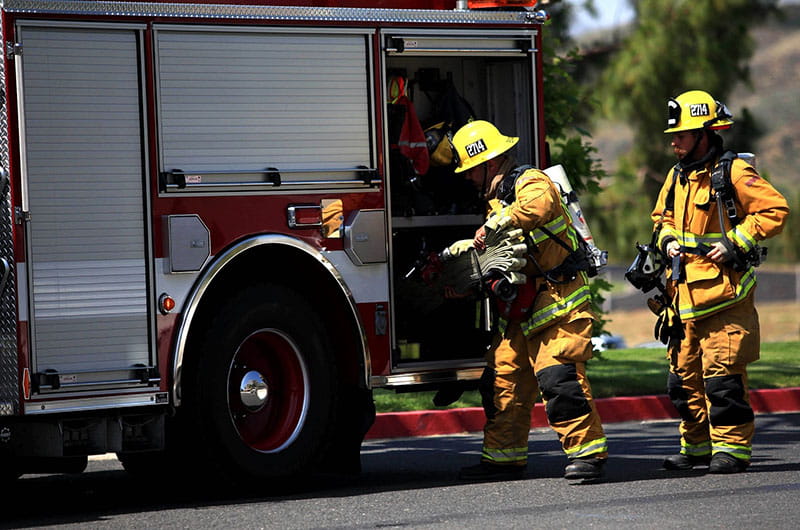Keeping First Responders Safe: Drexel Developed Safety Climate Scale Helps Fire Departments Reach Health and Wellness Goals
 By Greg Richter
By Greg Richter

- Drexel Selects New, World-Class Life Sciences Building at 3201 Cuthbert Street for Medical Research Operations
- Breakthrough on Gene Therapy for Hereditary Spastic Paraplegia
- Drexel Environmental Collaboratory Releases Cross-Sector Findings on Severe Weather Recovery Challenges
- Drexel Launches the Manuel Stamatakis Center for Alternative Investments at the LeBow College of Business

A new scale, that effectively measures the safety climate of a fire department, has been developed by researchers from Drexel’s Dornsife School of Public Health, according to a paper published today in the journal Safety Science.
A new safety scale, that effectively measures the safety climate of a fire department, has been developed by researchers from Drexel University's Dornsife School of Public Health, according to a paper published today in the journal Safety Science. The tool helps fire departments gauge their management and supervisor support for safety initiatives that prevent burnout, poor engagement and low job satisfaction – all attributes that many previous studies have shown can increase injuries and deaths in the line of duty.
“We are now going further upstream and measuring the safety climate that influences engagement and job satisfaction,” said lead author Jennifer Taylor, PhD, MPH, CPPS an associate professor of Environmental and Occupational Health in Drexel’s Dornsife School of Public Health. “By instilling a culture of safety and helping managers and fire department leaders convey safety messages, we are raising employee morale, job satisfaction and other factors that are proven to prevent injuries.”
The need is great for the roughly 1,056,200 firefighters in the United States (682,600 volunteers and 373,600 career firefighters). In 2017, there were 14,670 injuries and 3,400 deaths among firefighters in the line of duty.
The survey evaluated a nationally representative sample of 130 fire departments, consisting of 615 stations and 8,575 firefighters, on two domains. The first asked firefighters to grade their department management on seven safety questions, including whether the department “cuts corners on safety” when budgets are tight. The second asked firefighters to grade their direct supervisor on seven similar safety questions. Higher scores in these domains denoted that firefighters perceived management and supervisors to be more committed to safety. Those scoring poorly in those two categories also had poor job satisfaction and engagement and high rates of burnout.
The safety scale is now a component of the larger Fire Service Organizational Culture of Safety survey (FOCUS) developed by the team. The group is based in the Center for Firefighter Injury Research and Safety Trends (FIRST), which is a national-leading research center at Drexel created to collect and analyze data for the United States Fire and Rescue Service.
The FOCUS survey delivers a more comprehensive picture than the safety climate alone, by looking at poor safety behaviors, low job satisfaction and other outcomes that have been shown to lead to on-the-job accidents. Indeed, fire fighters with a higher FOCUS score have a lower injury rate, lower burnout rate, and are more satisfied with their jobs overall. The team found that fire departments that increase their FOCUS score by 10 points see the number of injuries in the department cut by 4 to 9 percent.
“We saw that, on average, firefighters across the country rated their front-line direct supervisors more highly than leadership,” said Taylor, who is also director and Principal Investigator of FIRST. “As fire departments grow, and get more stations, communication from central command gets farther and farther away from individual firefighters.”
Departments that have completed the FOCUS survey are eligible for a Culture Camp, organized by the FIRST team. At the camps, the FIRST team and fire departments collaborate on tailored steps, based on their survey results, to reach their safety culture goals. The authors note that many fire departments are already putting this data into action. For example, after seeing higher-than-average burnout scores, Dallas Fire-Rescue Department is now working with psychologists on a resiliency wellness program.
Future long-term studies will look at exposures to carcinogens and other effects of poor safety climate.
Beyond the necessity for keeping fire fighters safe, fire departments are a major factor in what cities pay for liability insurance. Fire departments are also under pressure to minimize workers compensation costs and not worsen their city or town’s insurance standard rating, which affects insurance premiums for their city or town.
The safety climate assessment is available to any U.S. fire department here at no cost.
Additional authors on this research include Andrea L. Davis, Lauren J. Shepler, and Christian Resick of Drexel University; Carolyn Cannuscio of University of Pennsylvania; Jin Lee of Kansas State University; and Dov Zohar from Technion-Israel Institute of Technology.
This research was supported by the Federal Emergency Management Agency FY 2011 Assistance to Firefighters Grant Program, Fire Prevention and Safety Grants.
In This Article
Contact
Drexel News is produced by
University Marketing and Communications.